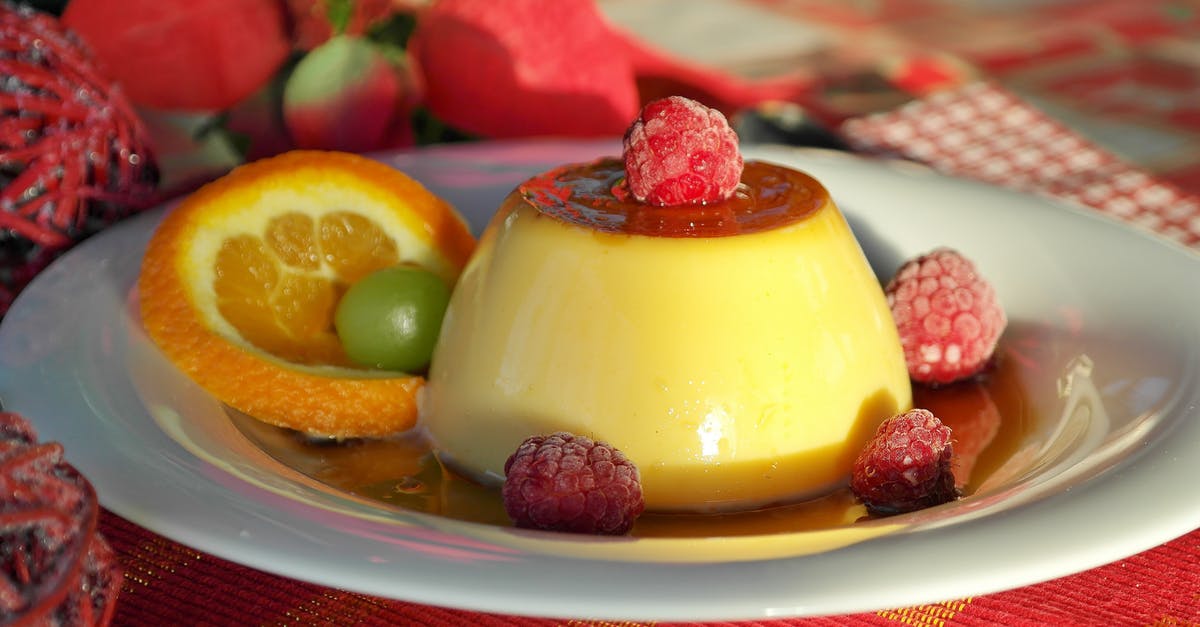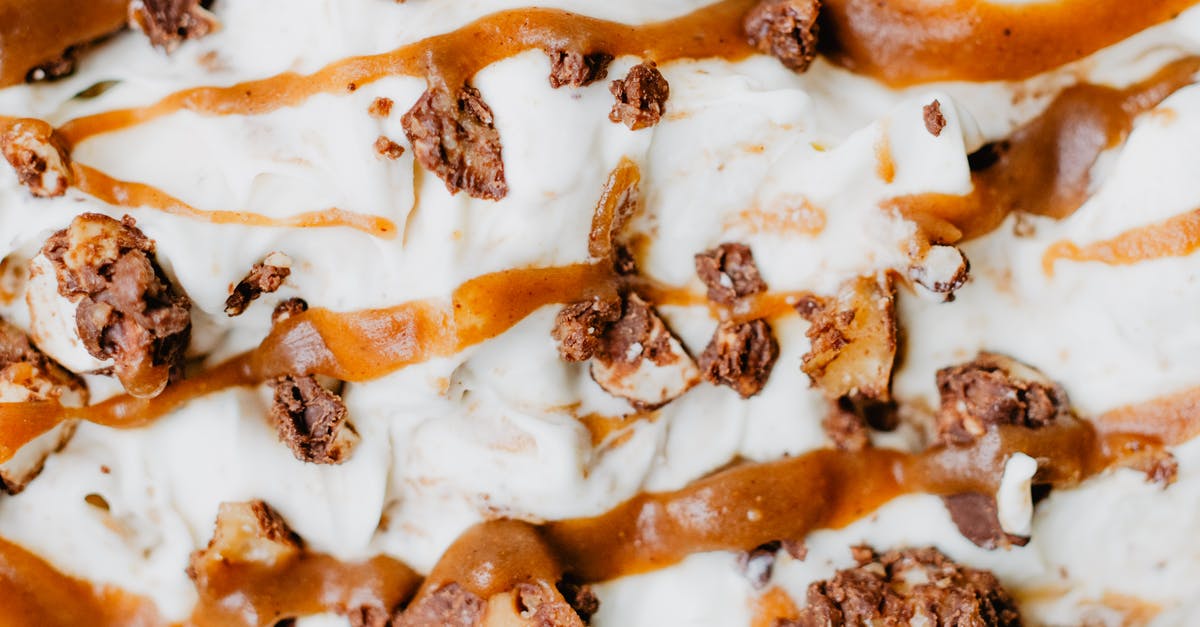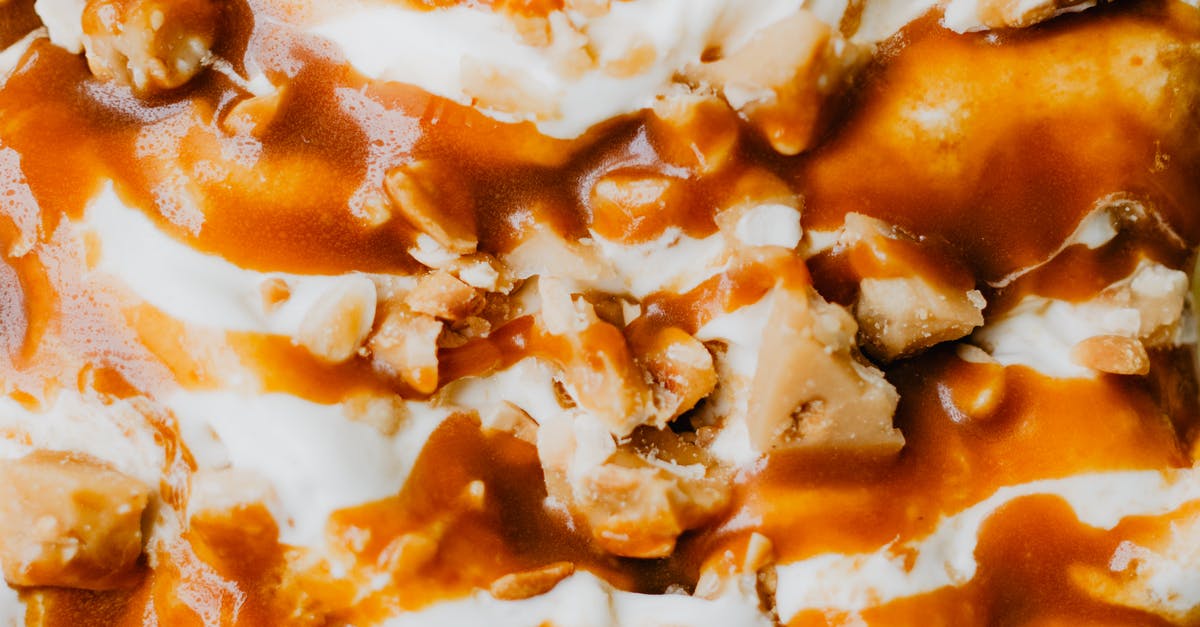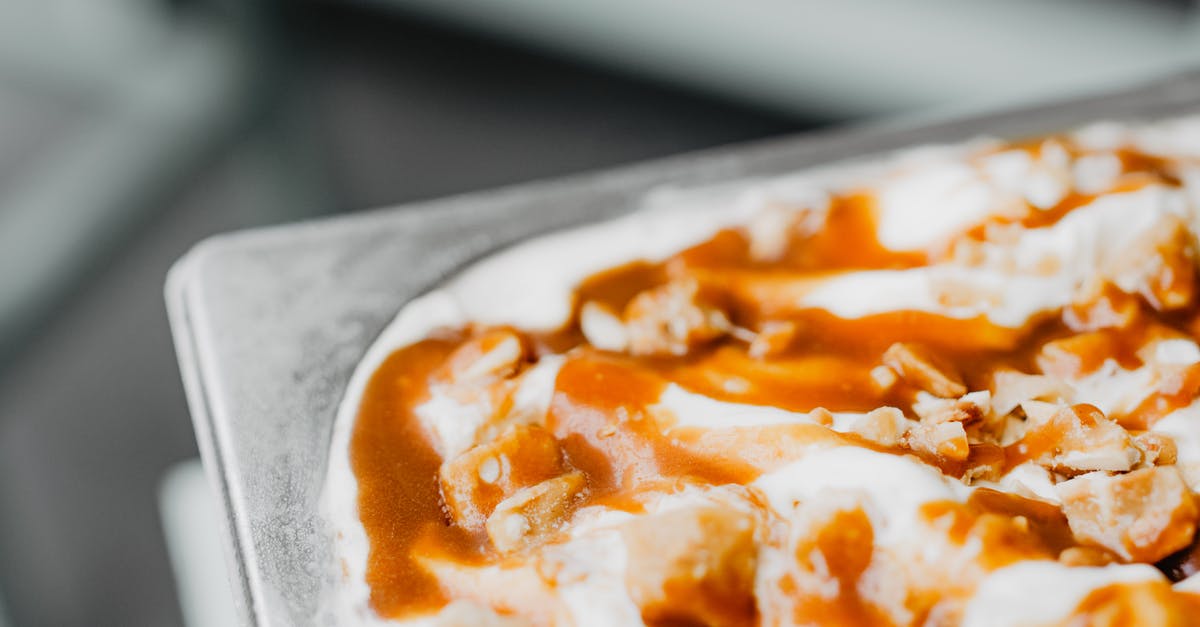Scraping Caramel for Flan

America's Test Kitchen proposes the following recipe as their "Perfect Latin Flan" (pg. 785, The Complete America's Test Kitchen Cookbook 2001-2016):
This recipe should be made at least 1 day before serving. We recommend an 8.5 x 4.5 inch loaf plan for this recipe.
4 2/3 oz sugar
1/4 cup water + 2 tablespoons warm tap water
2 large eggs + 5 large yolks
14 oz sweetened condensed milk
12 oz evaporated milk
1/2 cup whole milk
1 1/2 tablespoons vanilla extract
1/2 teaspoon salt
Stir together sugar and 1/4 cup water in medium heavy saucepan until sugar is completely moistened. Bring to boil over medium-high heat, 3-5 minutes and cook without stirring until mixture begins to turn golden, another 1 to 2 minutes. Gently swirling pan, continue to cook until sugar is the color of peanut butter, 1 to 2 minutes. Remove from heat and swirl pan until sugar is reddish-amber and fragnant, 15-20 seconds. Carefully swirl in 2 tablespoons warm tap water until incorporated; mixture will bubble and steam. Pour caramel into 8.5 x 4.5 inch loaf pan; do not scrape out saucepan. Set loaf pan aside.
Adjust oven rack to middle position and heat oven to 300 degrees. Line bottom of 13 x 9 baking pan with dish towel, folding towel to fit smoothly and set aside. Bring 2 quarts water to boil.
Whisk eggs and yolks until combined. Add sweetened condensed milk, evaporated milk, whole milk, vanilla, and salt, and whisk until incorporated. Strain mixture through fine-mesh strainer into prepared loaf pan.
Cover loaf pan tightly with aluminum foil and place in prepared baking pan. Place baking pan in oven and carefully pour boiling water into pan. Bake until center of custard jiggles slightly when shaken and custard registers 180 degrees, 1.25 to 1.5 hours. Remove foil and leave custard in water bath until loaf pan has cooled to room temperature. Wrap loaf pan tightly with plastic wrap and chill overnight or up to 4 days.
To unmold, slide paring knife around edges of pan. Invert serving platter on top of pan and turn pan and platter over. When flan is released, remove loaf pan. Use rubber spatula to scrape residual caramel onto flan. Slice and serve. Leftover flan may be covered loosely and refrigerated for up to 4 days.
It would seem like the amount of caramel left in the pan if you don't scrape would vary based on the size of the saucepan you use. Why would you not scrape the remaining caramel into the pan? Would it affect the texture/flavor?
Best Answer
(note : I'd have posted this as a comment because I don't have personal experience w/ this, but people keep complaining when I do as this might have enough information to be considered an answer)
I don't know about this case, but in other times when you're cooking down sugar there's always a fear of 'seed crystals' getting into the sugar (causing it to become grainy).
A little searching seems to support that theory. There were many websites talking about seed crystals, but I'm going to quote the one from Fine Cooking (The Science of Caramel), as they specifically mention problems with the sides of the pan:
http://www.finecooking.com/item/60729/the-science-of-caramel :
What can go wrong when making caramel?
The caramel turns grainy
The biggest drawback to the wet method is that the sugar tends to recrystallize more easily than it does with the dry method. When the sugar and water boil, sugar syrup may splash onto the wall of the pot, where it evaporates quickly and forms back into sugar crystals. If even one of these crystals falls back into the syrup, it can seed a chain reaction, turning the clear syrup opaque and grainy. Should this happen, you can remove it from the heat, add a few tablespoons of water, return it to the heat, and stir until the crystals dissolve before continuing on. That said, it's better to keep recrystallization from occurring in the first place, so here are a few ways to prevent it: ...
See the article at Fine Cooking for advice on how to prevent seed crystals and other information on caramel.
Pictures about "Scraping Caramel for Flan"



Why is my flan caramel hard?
Quickly pour the hot caramel into the bottom of each ramekin. (The caramel will harden against the bottom of the ramekin almost immediately \u2013 this is normal, so don't worry about it!)Why is my flan caramel bitter?
As the temperature continues to climb with more cooking, even more sugar molecules break down and the caramel will begin to taste markedly more complex and less sweet. Eventually more and more bitter, potent-tasting molecules will form that, if left unchecked, can make the caramel taste acrid and burnt.Why is my caramel custard not smooth?
This is caused by too high baking/steaming temperature or too long baking time that makes the milk start boiling in the mixture, lead to overcooked flan.Why is my flan grainy?
Yet Andr\xe9s has acknowledged that those flans may not be the most accomplished; often cooked at too high a temperature, they tend to turn grainy or rubbery. In many restaurant kitchens, the cooks do not bother to caramelise the sugar fully, making for a sickly sweet dessert.HOW TO CARAMELIZE SUGAR FOR FLAN 🍮 IN 3 EASY WAYS | TIPS FOR PERFECT CARAMEL | LECHE FLAN ARNIBAL
Sources: Stack Exchange - This article follows the attribution requirements of Stack Exchange and is licensed under CC BY-SA 3.0.
Images: Pixabay, ROMAN ODINTSOV, ROMAN ODINTSOV, ROMAN ODINTSOV
